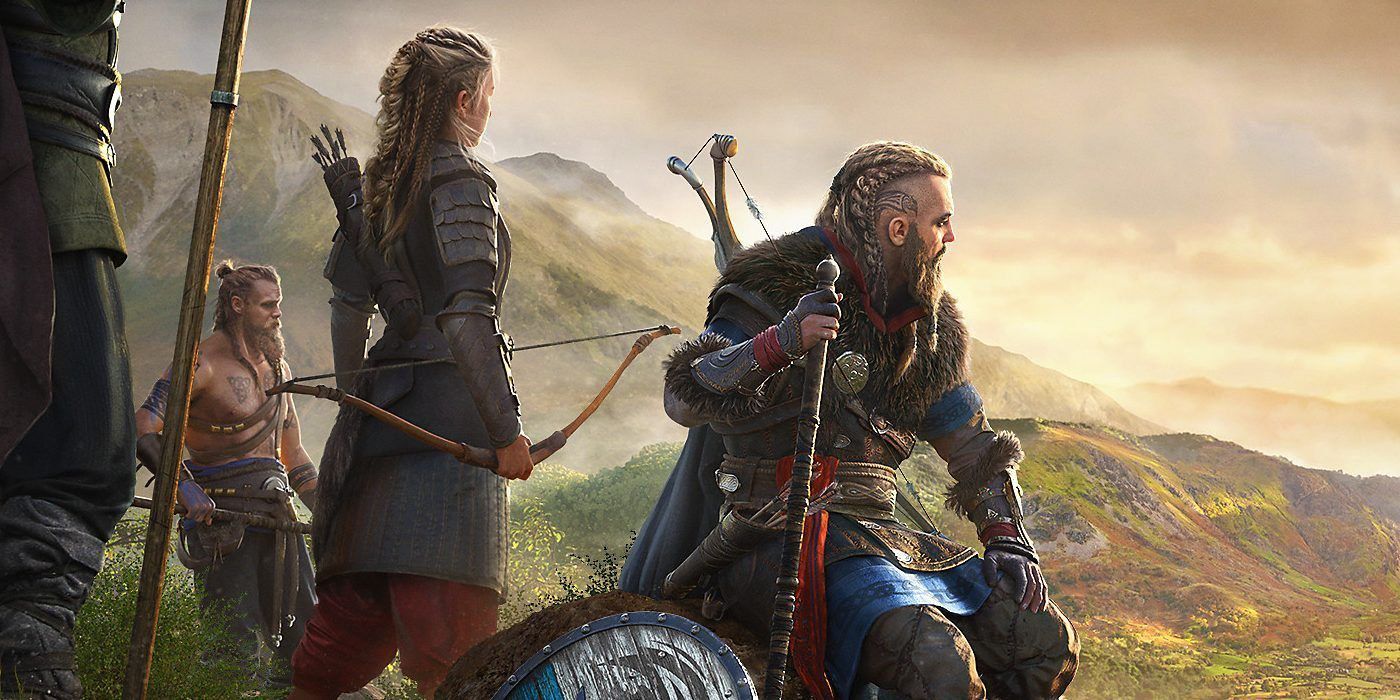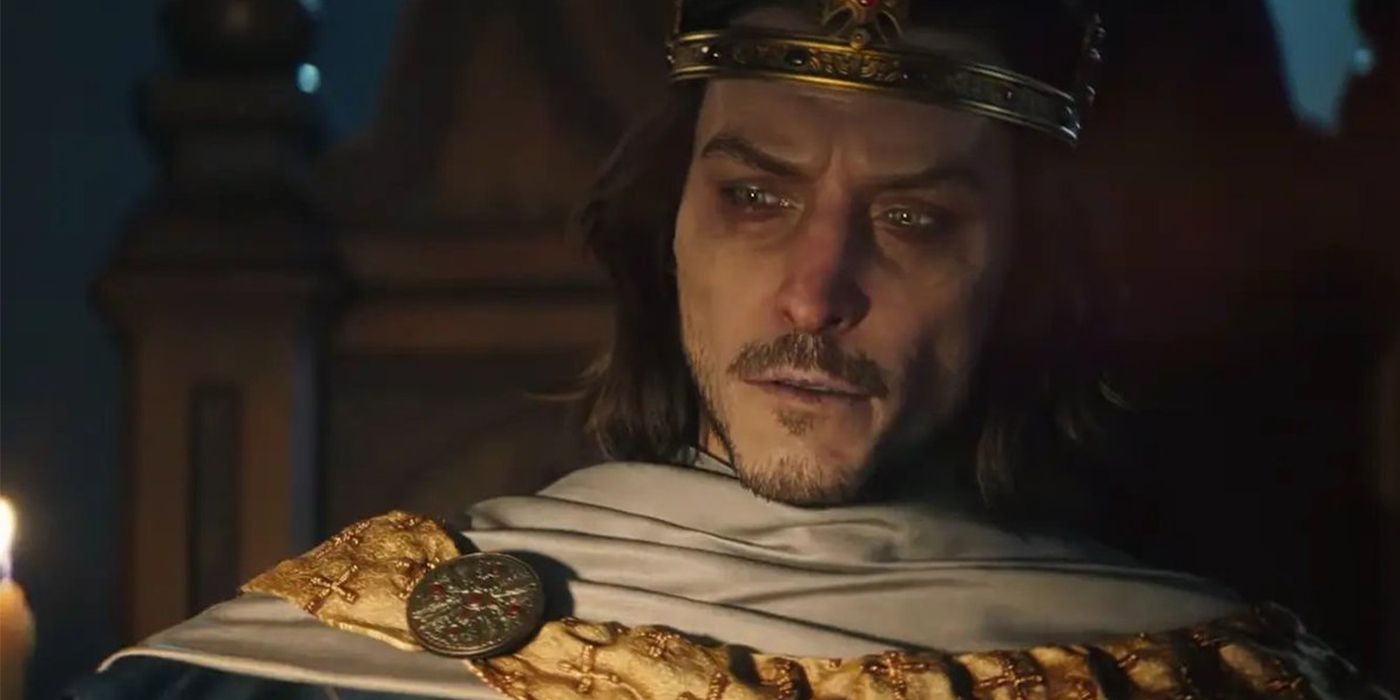How Assassin's Creed Valhalla Fits into the Assassin's Creed Timeline

It's only natural that Assassin's Creed Valhalla, formally announced by Ubisoft last week, would have a setting and time period as yet unused by the franchise. However, the unique placement of Assassin's Creed Valhalla deserves a deeper look, from where it lines up in the franchise to what that means for the game.
What's more, it's not always easy to remember every time period and locale used by Assassin's Creed; between main games and spin-offs, there are over 20 entries spanning from the days of the Peloponnesian war to Victorian-era London. The franchise also jumps around quite a bit--just look at the last two games compared to Valhalla itself. Origins actually takes place long after the events of Odyssey, and Valhalla takes place hundreds of years after both games. Case in point, the history of Assassin's Creed can get a little muddied.
Assassin's Creed Valhalla is set during the 9th century, meaning sometime in the 800s A.D., during the golden age of Vikings and the Dark Ages of England. This setting was suspected for quite a while before Valhalla was officially announced, and now having it confirmed has given way to plenty of other details being made public knowledge as well.
Valhalla's expansive game map will cover part of Norway and England, specifically four major kingdoms located in England during this time period: Wessex, Northumbria, East Anglia, and Mercia. In layman's terms, that large expanse of land includes major cities like London, Winchester, and Jorvik (which today is called York), along with a handful of smaller towns scattered around the map.
While the exact year (or years) that Valhalla takes place isn't yet known, it's possible to narrow down the possibilities by looking at the Viking era itself. According to historians, the age of Vikings more or less began in 793 A.D., when Vikings launched a raid on the Lindisfarne abbey; it then ended roughly 170 years later in 1066 A.D., after a failed invasion on the Vikings' part. In between those years, Vikings became known for their hit-and-run tactics and their incredible longboat craftsmanship, expanding their presence into all corners of Europe and beyond. Skilled Viking sailors even landed on what is now Greenland and Iceland, as well as on the Americas, settling what is today the coast of Newfoundland, proving that if Ubisoft ever wanted to expand Valhalla's map, it'd have plenty of places to go.

Now, 793 through 1066 is a generous chunk of time, but it's possible to narrow that down even further using concrete information from the Valhalla reveal trailer: namely, the presence of King Alfred the Great. Alfred reigned as the King of Wessex from 871 to c. 886, and then as the King of the Anglo-Saxons from c. 886 to 899. Thus, judging by his position in the trailer, it's most likely that Valhalla falls sometime between 886 and 899. Alfred is known for not only fighting the Vikings but eventually making a deal with them, which explains the fact that diplomacy will be a big deal in Valhalla's gameplay.
Assuming that is the correct time period for Valhalla, that means the game takes place over 900 years after the events of Origins, and about 300 years before the events of the first Assassin's Creed--which, despite having released 12 years ago, is the next in the series' chronological order. According to creative director Ashraf Ismail, the Assassins and Templars of Valhalla will actually still most resemble the proto-factions of Origins and Odyssey, meaning the playable character Eivor will more likely be known as one of the "Hidden Ones," and any templars they encounter will actually be members of the Order of Ancients. That also means the more modern Assassins' order hasn't been established yet, and the proto-factions have lasted for over 1,000 years before becoming the Assassins and Templars that players know.
As players of the original game will know, Assassin's Creed involves the reinventing of the Assassins' order due to corruption in the ranks. The placement of Valhalla could mean a couple of things related to that: perhaps players will get to see the establishment of the order over the course of the game, or at least the beginnings of it. Or, perhaps the corruption that was uncovered in Assassin's Creed will begin to make its insidious way through the ranks in Valhalla. Either way, Valhalla's relation to the original game means that the Assassins' order is a bit younger than most fans probably assumed; if the order was being reinvented in 1191, then it'd have to have been first formed sometime in the last 300 years, perhaps a couple of centuries before Assassin's Creed.
As of right now, it's looking like Eivor won't begin the game as a Hidden One, but instead work with them as the game goes on, as seen by the hidden blade in their possession during the trailer. But the game's setting likely means much more that, having connections to the modern-day storyline as well. How Eivor is connected to that subplot (beyond just having their DNA on a relic or something similar) is unclear, but modern-day antagonist Otso Berg has quite a few connections to Vikings. He looks strikingly like Shay Cormac and both of them wear an emblem that resembles Yggdrasil, not to mention that Berg has outright said he said Viking ancestors.
Berg's obvious connections to Vikings and that era could mean that the concept for Valhalla has been around since Rogue was in the making. Perhaps Eivor is an ancestor of Berg, which could be how their memories are explored, or perhaps Eivor encounters Berg's ancestor among the Vikings. One thing is for sure: when Valhalla launches, players will be able to live their best Viking lives in style and find out even more about the mysterious Hidden Ones as they go.
Assassin's Creed Valhalla releases for PC, PS4, PS5, Xbox One, and Xbox Series X sometime during the 2020 holiday season.
 Reviewed by Unknown
on
May 06, 2020
Rating:
Reviewed by Unknown
on
May 06, 2020
Rating:

Post a Comment